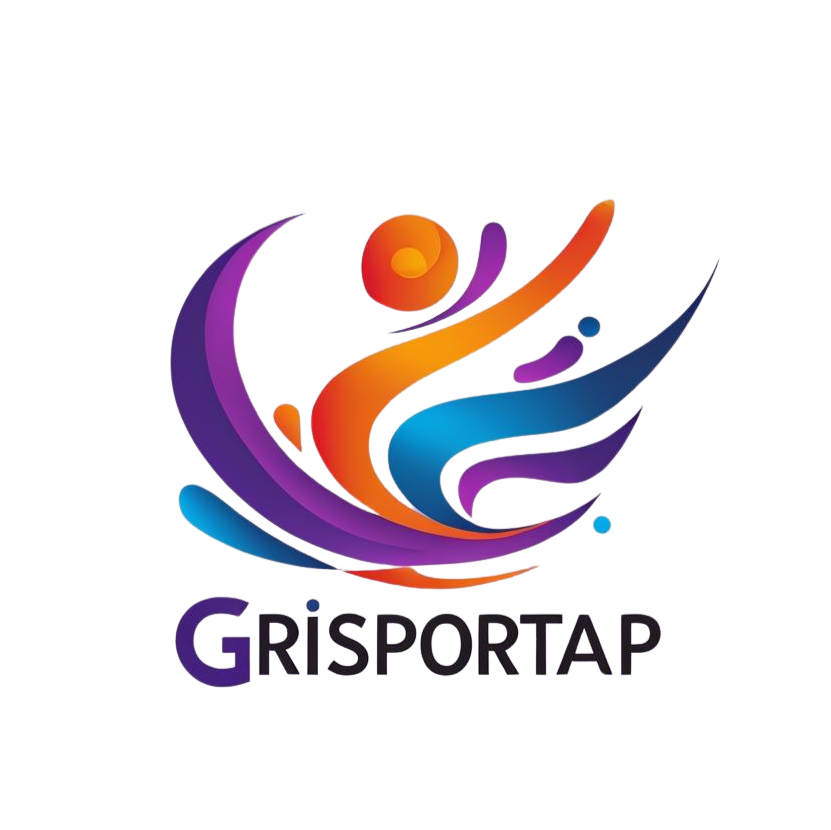dance marketing strategies help you grow enrollments and retention without promising instant results. Can a simple, steady mix of channels outperform one big push?
Your U.S. studio faces a clear reality: parents research locally online, kids find trends on apps, and budgets need measurable returns. Social media is core — teens spend hours there while Millennial and Gen X parents average 2h16m and 1h22m daily. Referral recommendations are trusted by 88% of people.
No single channel does it all. The goal is a simple mix you can maintain week after week: social that converts, SEO and local listings, PPC for enrollment windows, email and SMS nurture, direct mail for locality, referrals and partnerships, merch and PR, and measurement.
Inside, you’ll find clear H2/H3 sections with practical steps, examples, and checklists so you can act fast even as a team of one. Use ethical opt-ins, keep messaging respectful, and point everything back to your website with clear schedules, pricing, and contact options.
Pick one or two quick wins now, then layer more as capacity grows. Take notes, bookmark this guide, and return as you build momentum over the next six months.
Introduction: dance marketing strategies that fit today’s studio reality
Smart timing lets your offers meet parents exactly when they search. Plan around back-to-school, recital seasons, and summer intensives so families see your offers when decisions are made.
Why this matters now: Parents often use Facebook and LinkedIn, while teens discover classes on Instagram and TikTok. Email still gets strong open rates for recreational programs, so use it for trials, reminders, and loyalty updates.
How this listicle helps you act fast
Each section tells you what to do, where to do it, and how to measure success in a few clear steps.
- Pick one primary goal for the season (new beginner enrollments, for example).
- Start with quick wins: claim profiles, set simple automations, refresh offers.
- Combine organic posts and paid media to extend reach without extra complexity.
Consistency and clear calls-to-action matter more than chasing every new tool. Bookmark this guide, share it with staff for weekly check-ins, and adapt the plan to your local market. If setup feels technical, seek qualified help so your website and systems work reliably.
Set the stage: audience segments, personas, and your USP
Identify the real people behind your sign-ups so your offers speak directly to them. Start by listing the common segments you serve and then narrow to two or three to keep messaging sharp.
Common studio segments and example personas
Typical U.S. segments include children (3–12), teens, adult fitness or social classes, aspiring pre-professionals, and seniors. Focus saves time and budget.
- How to gather inputs: class rosters, quick parent surveys, trial intake forms, and attendance data.
- Use staff insight: ask instructors for common goals and barriers they see.
- Busy Mom Michelle — age 38, limited after-school time, wants consistent childcare and clear pricing.
- Dance Enthusiast Emily — age 15, trains evenings, aims for technique growth and performance chances.
Crafting a clear, credible value proposition
Translate persona insights into offers: post-trial class times after school, transparent pricing pages, and easy carpool-friendly schedules.
Write a USP in one sentence: state what you do, who it helps, and a believable proof point (instructor credentials, awards, or testimonials).
Share that USP in your website header, instructor bios, and social profiles. Revisit personas each season and involve staff so every touchpoint matches your brand promise.
dance marketing strategies you can deploy this season
Focus on a few high-value channels so your team spends time where families look first.
Choosing channels based on your target audience
Map parents to Facebook and LinkedIn. Teens favor Instagram and TikTok. Use YouTube for longer-form credibility and discovery.
Prioritize local discovery: claim your Google Business Profile, keep maps info current, and ask for reviews to show up when parents search nearby.
Aligning each tactic to one primary business goal
Give each channel a single goal like “40 new beginner sign-ups” or “20 trial bookings this month.” Track every channel back to that number.
- Email + SMS: trials, reminders, and quick follow-ups with opt-ins and clear frequency limits.
- PPC: fill gaps during enrollment windows when organic reach isn’t enough.
- Direct mail / Flyers: boost local awareness near schools, parks, and community centers.
- Referrals: simple family perks to turn loyal clients into advocates.
- Branded merch & sponsorships: increase visibility at events and school booths.
Simple weekly cadence: two social posts, one email, one review request, and one partnership outreach. Allocate small creative budgets to test paid boosts on your best posts.
One CTA per tactic — book a trial, join a waitlist, or RSVP for an open house — and measure which channel moves the needle toward your goal.
Social media that converts, not just “gets views”
Turn social channels into enrollment engines by focusing on actions, not just impressions. Aim for posts that prompt a trial booking, lead capture, or website visit.
Platform-by-platform plays
Facebook: keep a business page, use Groups for parent conversations, run Lead Ads for trial sign-ups, and post original videos plus event listings.
Instagram: Reels with class highlights, Stories polls, and saved highlight covers for schedules and FAQs.
TikTok: short choreography clips, safe challenges, and Duets with students; consider local collabs and TikTok support when scaling.
Mix organic and paid with native creative
Blend behind-the-scenes storytelling with small boosts aimed at parents within 10–15 miles. Use lead forms for trials and retargeted ads for people who visited your website booking page.
Build community with UGC and live sessions
- Collect UGC with signed permission forms and credit creators.
- Run a monthly hashtag challenge that is age-appropriate and safe.
- Host 1–2 live Q&A or open-class sessions per month to convert viewers into bookings.
Editorial cadence and brand consistency
- Post 3–5 times weekly and share daily Stories during events.
- Repurpose top content by format: reels, short clips, and captioned photos.
- Keep a consistent logo, color palette, bio CTA, and link-in-bio to your website booking page.
Track saves, shares, and clicks to know what drives trials. Double down on winners and keep each social media presence aligned to your studio goals.
SEO and local discovery to rank where parents search
Local search wins when your pages and profiles reflect what parents type right now. Most clicks land on page one, so focus on clarity and local intent to reach your audience quickly.
Keyword research for local intent and class types
Identify phrases parents use, such as “kids dance classes near me” or “[City] hip-hop class.” Use free tools to check volume and variations.
Action step: build location pages with titles like “Beginner Ballet — [City] dance studio” and include class types in headings.
Google Business Profile, reviews, and maps visibility
Claim and fully complete your Google Business Profile. Add accurate hours, phone, categories, and photos.
Ask families for reviews after trials and recitals. Reply kindly to each review to show you listen.
“Claim your profile, add photos, and post offers — the maps pack drives local traffic.”
On-page basics: titles, headings, internal links, and schedules
Add structured information: class schedules, tuition ranges, and instructor bios in readable sections.
- Use descriptive titles and H2/H3 headings with city and class names.
- Keep NAP consistent across your website and directories for map rankings.
- Link from blog posts to enrollment and schedule pages to guide parents.
Measure: track GBP impressions and calls, and organic traffic to class pages to see what works.
PPC for predictable reach during key enrollment windows
A well-timed ad campaign puts your studio at the top of local searches during enrollment windows. Use paid search to fill class seats when families are actively looking.
Smart bidding on local keywords and remarketing
Choose high-intent phrases like “ballet classes [city] enrollment” and “dance studio near me.” Set a tight geo-radius (5–10 miles) and run ads during after-school and evening hours.
Remarketing helps re-engage visitors who checked schedules but didn’t book. It often lifts conversions without raising overall spend.
Budgeting, ad copy, and landing page alignment
Start with a modest daily budget to test and move spend to winning ads. Use responsive search ads that highlight benefits: free trial, beginner-friendly, or convenient schedule.
Build simple landing pages per class with one clear action — “book a trial” or “call now.” Add conversion tags and call tracking to measure results.
“Test headlines, add negative keywords like ‘jobs’ or ‘free lessons,’ and refresh copy for seasonal pushes.”
- Monitor search terms and add negatives to save budget.
- Run A/B tests on headlines and CTAs to learn what resonates with parents.
- Consider nonprofit Google Ad Grants if you qualify; they can boost business reach.
Email marketing that nurtures prospects and delights current clients
Email marketing is a low-cost way to move curious parents from a website visit to a booked trial and to keep enrolled families happy. Start small: offer a helpful lead magnet, then build simple, reliable flows that save you time.
List building with ethical opt-ins and lead magnets
Give value first. Offer a “Beginner’s Guide to Kids’ Dance” or a printable schedule PDF in exchange for consent. Keep sign-ups clear about frequency and purpose.
Segment prospects from enrolled clients as you collect information so messaging stays relevant to each audience.
Acquisition sequences: welcome, trial, follow-up
Use a three-step acquisition flow: instant welcome, trial booking link, and a reminder with practical details (what to wear, arrival time).
After the trial, send a warm thank-you with a simple enrollment link and an optional limited-time perk to nudge action.
Loyalty emails: appreciation, perks, and surveys
Send appreciation notes and early-access registration to current clients. Share recital prep tips, costume reminders, and short surveys to collect feedback and improve classes.
Compliance, deliverability, timing, and subject lines
- Include your physical address and an easy unsubscribe link to stay CAN-SPAM compliant.
- Use clear from-names, concise subject lines, and mobile-friendly templates to improve deliverability.
- Send during parent-friendly times (early morning or early evening) and keep copy scannable.
- Track opens, clicks, and enrollments to refine your cadence.
- Honor preferences promptly to protect trust and inbox reputation.
- Test short subject lines and one CTA per email to maximize action.
SMS and text messaging for timely, high-intent touchpoints
A short, well-timed text can turn a curious lead into a booked trial fast. Use SMS when you need a quick response or to confirm attendance the same day.

When to use text vs. email for trials, reminders, and alerts
Use SMS for last-minute class updates, weather closures, and trial reminders on the day-of. Texts get read fast and prompt action in a limited time window.
Keep details-heavy material in an email and link to full schedules, policies, or payment pages from the text. That gives families both a quick nudge and the full context.
Opt-in rules, tone, and frequency to protect trust
Obtain explicit opt-in before texting. Tell parents how often you’ll message and include a simple opt-out option in every message.
- Write short, friendly texts that include your studio name and a direct link to confirm attendance.
- Limit frequency to essential notices to avoid fatigue and unsubscribes; reserve promos for rare, valuable offers.
- Segment lists so only the right families receive class-specific alerts. Automate confirmations and reminders around a trial or open-house RSVP.
- Respect quiet hours and monitor replies so you respond quickly to questions from parents and current clients.
SMS works best as a companion to email. Pair them so your audience gets a fast nudge plus the full details on your site. Keep messages respectful, concise, and clearly tied to your local dance studio offerings.
Direct mail and flyers that spark local action
A simple postcard or flyer can cut through neighborhood noise and send families straight to your booking page.
Why it works: after direct mail, 57% visit the website, 53% search the brand, and 46% read reviews. Use that behavior by making the next step obvious and fast.
Designing offers that drive website visits and trials
Make a postcard with a bold headline, a small map, and a clear trial offer. Add a QR code or short tracking URL so you can measure responses.
Keep content tight: list two popular classes, one quick success story, address, hours, phone, and a short URL to book.
“Include a deadline and a unique code to create urgency and track neighborhoods.”
Distribution spots and seasonal timing
Post flyers on approved community boards and leave mailers at parks, grocery stores, coffee shops, libraries, bus stops, and community centers.
Time campaigns around back-to-school, recital season, and summer camps for the best lift. Follow up scans or visits with an email or SMS sequence to convert interest into a booked trial.
- Create a postcard with bold headline, map, and tracking QR code.
- Highlight two to three classes and clear next steps on your website.
- Use unique URLs or codes to attribute responses to neighborhoods.
- Keep design clean, use brand colors, readable fonts, and add a deadline.
For a longer playbook on local outreach and enrollment funnels, see this studio growth guide.
Referrals, loyalty, and word-of-mouth you can measure
Word-of-mouth scales when you make referring simple, fair, and trackable. Create clear rules and a small reward so families feel confident sharing your classes.
Structuring incentives for students and parents
Offer a dual-sided perk: for example, a $25 credit for both the referrer and the new family after a paid enrollment. Keep perks seasonal and rotate them to keep interest high.
- Define when credits apply, which classes qualify, and max caps per season.
- Provide share cards and a unique URL so a parent can send a link in one click.
- Add a small loyalty layer for consistent attendance or recital support to reward long-term clients.
How to track referral sources and keep it fair
Track every lead at first touch: add a referral field on trial and enrollment forms or capture source in your lead center. That gives you clean data for attribution.
- Train staff to ask happy families for referrals at natural moments, like after a great recital or a positive feedback call.
- Celebrate referrers with permission-based shout-outs to reinforce community and encourage more sharing.
- Review referral data monthly to spot top advocates and refine the offer.
“Eighty-eight percent of people trust recommendations from people they know.”
Keep it fair: state rules in your welcome packet and email signatures so everyone knows how credits work. That protects trust as your business grows.
Local sponsorships, partnerships, and community presence
Get visible where families gather: local sponsorships and partnerships build real-world trust and create steady opportunities for trial sign-ups.
Pick events that match your audience. Choose family-friendly fairs, school nights, charity 5Ks, and arts festivals where parents and kids already attend.
Events, schools, and cross-promotions that fit your brand
- Sponsor youth teams or runs to get your logo on materials and booths.
- Partner with nearby gyms, yoga studios, and health stores for flyer swaps and social shout-outs.
- Offer short demo classes on-site to showcase instructors and invite trial bookings.
Booth setups, talking points, and follow-up plans
- Bring a simple booth kit: banner, table cover, tablets for sign-ups, and trial vouchers.
- Use talking points that highlight beginner pathways, schedules, and your studio’s community culture.
- Collect contacts via a giveaway tied to a trial or camp; follow up within 48 hours with a warm email and booking link.
Track results: log which events produce trials and enrollments, thank organizers publicly, and encourage families to wear branded merch to boost visibility next time.
“Sponsorships and smart cross-promotions turn local goodwill into measurable leads.”
Branded merchandise and PR to extend your studio’s footprint
Branded items and small PR wins extend visibility beyond your walls and into the neighborhood. Practical merch and feel-good media moments help you reach families where they already spend time.
Merch that travels: from water bottles to dance bags
Prioritize useful items parents and students use weekly. Think water bottles, duffle bags, and comfy tees.
Sell online and at the studio with clear product photos, sizes, and a simple cart on your website.
- Create registration gift bundles to boost perceived value.
- Use limited-edition drops around recitals and camps to drive excitement.
- Keep a consistent look: logo, colors, and simple type for easy recognition.
Press, recitals, and photo ops that build credibility
Pitch local media on feel-good angles: recital highlights, scholarships, or a guest artist workshop.
- Build a step-and-repeat backdrop and hashtag signage for photos at events.
- Encourage families to post, tag your accounts, and link to your website.
- Feature instructor achievements and alumni stories to build trust.
“Small merch choices and clear photo moments make your brand visible in the community.”
Your website and tech stack: the hub of studio marketing
Think of your site as a front desk that never closes: it should answer common questions fast and guide visitors to the next step.
Site essentials: schedules, pricing, contact, and accessibility
Place class schedules, tuition, and contact options within one click from the homepage. Make buttons large, labels clear, and show the next available trial prominently.
Ensure a mobile-first design and fast load times. Slow pages cost conversions.
Add simple accessibility basics: alt text, readable contrast, captions on videos, and clear headings so all audience members can find information.
Management software, CRM, and analytics integration
Embed trial booking forms and connect them to your CRM so leads create automated follow-ups in email and SMS tools.
- Integrate analytics and call tracking to measure calls, forms, and page performance.
- Use management software for rosters, billing, and communications in one place.
- Sync lists so enrollments update subscription status automatically.
“Keep your media and copy updated each season; fresh information builds trust and reduces questions.”
If you need help, hire a pro to set up secure integrations and tracking so your business data stays clean and useful.
Measurement, budgets, and timelines that keep you on track
Start with one clear goal and measure backward from there. Pick a primary target—like 40 new trial bookings—and use conversion rates to plan spend and tasks. Keep tracking simple so data informs decisions, not creates busywork.
KPIs by channel and simple attribution
Define a short KPI list: trials booked, cost per trial, enrollments, retention, and review volume.
- Social: clicks and trial form completions.
- GBP: calls and direction requests.
- PPC: conversions and cost per acquisition.
- Email/SMS: open, click, and confirmation rates.
Attribution: use tagged links, unique codes, and a “How did you hear about us?” field on forms. That gives clean sources without complex tools.
Six-month calendar and weekly time blocks
Build a six-month plan around enrollment peaks with monthly themes and offers. Block weekly time so work is repeatable:
- Content creation — 90 minutes weekly.
- Community engagement — 15 minutes per social channel daily.
- Review requests and follow-ups — one focused hour weekly.
- Partnership outreach and events — two hours weekly during campaign windows.
Set small test budgets, review reports weekly, and scale winners. Keep a shared calendar with deadlines for recitals, open houses, and camps. Assign staff roles, celebrate progress, and document learnings so each season improves your marketing efforts.
Common marketing mistakes studios can avoid
Simple habits, like inconsistent posts or outdated information, quietly erode trust with families. Catch these patterns early so your offers convert and your reputation stays strong.
Overpromising, inconsistency, and ignoring data
Don’t promise instant transformations. Set clear, realistic expectations that respect parents and students. That builds long-term trust and reduces complaints.
Keep your website, profiles, and flyers consistent and accurate. Conflicting hours, prices, or class names confuse your audience and hurt conversions.
- Post regularly: short, timely posts and updates prevent gaps that make your studio look closed or unreliable.
- Use focused landing pages: avoid sending paid ads to a generic homepage; one action per page boosts trials.
- Honor opt-ins: get consent for emails and texts, and respect unsubscribes to protect your inbox reputation.
- Respond to reviews: reply with empathy, offer solutions, and follow up offline when needed.
- Watch your data weekly: test creative, pause underperformers, and double down on what the audience prefers.
Train staff so every message families receive is on-brand and helpful. Small fixes now save time, budget, and goodwill as your business grows.
“Clear expectations, consistent info, and simple tests beat flashy promises every time.”
Conclusion
Focus on repeatable habits and you’ll see steady returns for your studio and community. Simple, consistent steps across a few channels win over sporadic bursts. Pick two quick wins today and add the next tasks to your calendar.
Remember: your website and clear calls-to-action turn interest into trials and enrollments. Revisit personas and your USP each season so your messages match the audience you serve.
Track what matters in a six-month plan, use email and social media as reliable touchpoints, and let referrals and partnerships compound over time. Seek expert help for setup or audits when you need extra hands.
Practice responsibly: keep compliance and trust at the center of your work. Celebrate small wins, share them with your team and families, and keep learning as your business grows. Thanks for reading — use the checklists in earlier sections to start implementing today.



